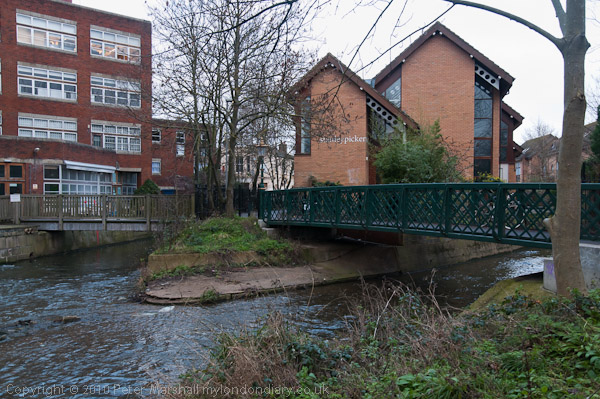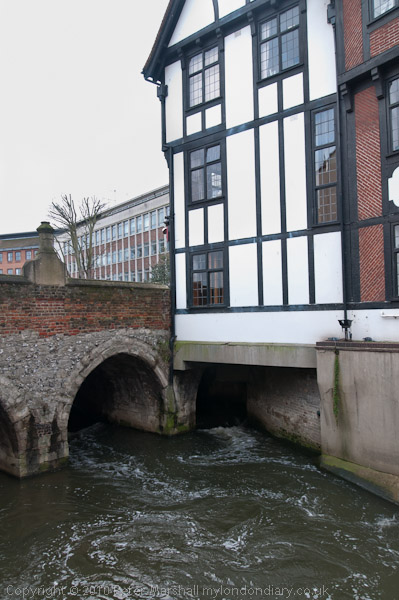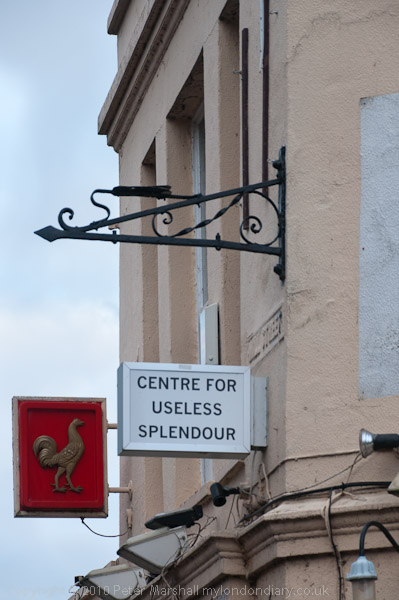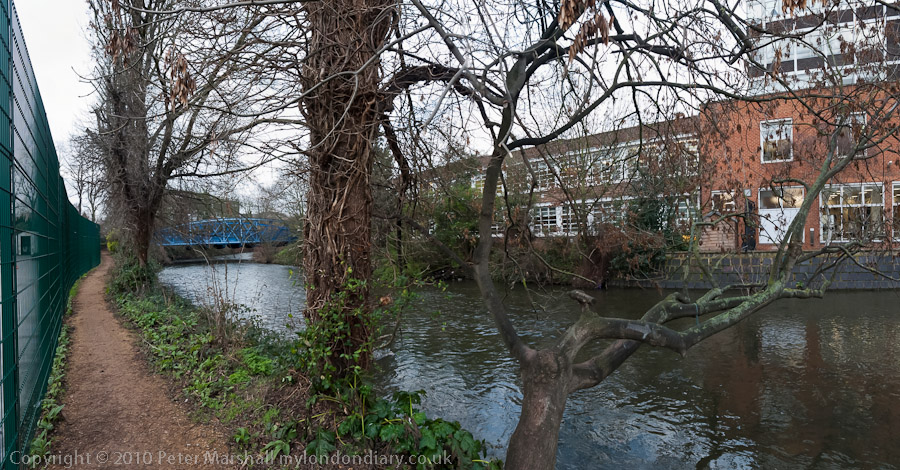I think I first became aware of the work of Eadweard Muybridge while I was in short trousers, on one of the visits we were treated to by two of our maiden aunts to London’s Museums. The Science Museum was only a short trip on the District line away from where I grew up, but London was another world, and one to which my own parents seldom if ever ventured. Back in the 1950s I’m not sure what kind of display the Science Museum in South Kensington had, and my memory of seeing the images of a jerkily flapping bird in flight may well be a later back-projection.
But when I read what is apparently the first published book on him, Kevin MacDonnell‘s ‘Eadweard Muybridge – The Man Who Invented the Moving Picture’ (ISBN: 0 297 99538 3) in 1972, a book whose photographic enthusiasm made up for its many errors, much of what it contained on his pictures of movement was already known to me from the history books, but the book did fill in many details on his photography as well as more about his extraordinary life. But the real revelation was to see his photographs of Yosemite, Alaska and Central America and to realise what a fine photographer he was.
It was perhaps shortly after that I first visited the display of his work in his home town of Kingston, a few miles from where I live on the edge of London, and was rather disappointed. Some years later we took students to see it at the Kingston Museum and it had I think improved, and as a part of the current interest in his work aroused by the Corcoran Museum show which closed recently at Tate Britain and will be on show again in San Francisco from 26 February to 7 June 2011, Kingston Museum has benefited from a Heritage Lottery grant of almost £50,000 for its own Muybridge exhibition.
Web sites worth looking at on Muybridge include Stephen Herbert’s encyclopaedic The Compleat Muybridge and the Muybridge Collection on the Royal Borough of Kingston upon Thames web site. But unfortunately although this latter contains much important material, particularly related to his movement work, there is little about his other photography. Their current exhibition (until 19 March 2011) concentrates on his hand-painted glass Zoöpraxiscope discs used in his lecture presentations. Based on his photographs, these are certainly unique artefacts but seem very much a sideshow compared to the actual images published in Animal Locomotion and the Human Figure in Motion (and now animated on screen by almost everyone, including in the past a number of my students.)
You can however view some of the photographically more interesting aspects of his photography from the Kingston collection in the ‘Image and Context‘ section of the Eadweard Muybridge: Defining Modernities site.

The Stanley Picker Gallery at the University of Kingston
Also taking part in the Kingston celebrations is the Stanley Picker Gallery at the University of Kingston. I have to say that the most interesting part of my visit there was the walk to and from the site, through the streets of Kingston and then back along by the Hogsmill River, one of London’s lesser known streams.

Hogsmill River in Kingston – perhaps London’s oldest bridge, though much widened

Visitors to the Swan pub on the Hogsmill Walk may be disappointed
The gallery currently contains two works by an artist which are based loosely on Muybridge’s work. One references his 1877 panorama of San Francisco – which can be viewed online in some detail elsewhere (and on the same site there is also an 1851 daguerreotype panorama of the Bay.) Muybridge’s work is remarkable for it’s detail and clarity, thanks in part to the large (indeed ‘mammoth’) plates on which he photographed it, but also to his careful choice of the day when the air was particularly clear. Perhaps too he had learnt something from his previous attempts the preceding year on a smaller – which had been destroyed in a fire. The 13 plates together produce a 17 foot long image covering a full 360 degrees and showing a remarkable precision in alignment.
It did occur to me that a more fitting tribute to Muybridge would have been to host a show of rather more interesting panoramic photography than the two works on show in postcard racks here, which were I think taken in the garden of 2 Liverpool Road, the house where he spent his final years in Kingston, though I think it has changed rather since he was there.

Hogsmill River at Kingston University – right click and select ‘View Image’ to see larger
The single thing I found most interesting about the work on show in the gallery was the letter reproduced on the final page of the leaflet from David Leigh in California to Borough Librarian Mr Cross on Jan 24th 1949, sending him some information about Muybridge and which in a postscript says “I have read, somewhere, that he was drawing to scale, a replica of our Great Lakes, at the time of his passing.” This was presumably the inspiration for the work based on the Great Lakes which apparently made use of linoleum, which I also found of little interest.
I can’t however let pass the following error in the introduction to this work:
LINOLEUM Linoleum was invented by Frederick Walton in Staines, England in 1855.
Much though as a resident of Staines I might want to claim any honour it deserves, unfortunately this is just factually incorrect. Staines did have a long connection with lino, and in my youth this was certainly clear to one’s nostrils as you drew near the town, perpetually reeking of linseed oil. But Walton himself wrote to the Technical Director of the first Austrian linoleum company Felix Fritz, the author of ‘Das Linoleum und Seine Fabrikation‘ that he invented linoleum in 1861 (and it is described but not given that name in a British patent of the same year.) At that time Walton was still working in Chiswick, and had no connection with Staines; it was only in 1864 that together with some new partners he purchased the land on the banks of the Colne there to set up a larger factory to manufacture lino.
Should you wish to read Fritz’s extremely turgid tome there is a copy in the library of the Royal Society of Chemistry at Burlington House, but one of the two existing copies of an edited English edition is on a shelf downstairs, severely abridged and translated pro bono for Staines Musuem by Linda Marshall with considerable (uncredited) technical assistance from myself.
The lino in Staines, long the town’s major employer, celebrated its centenary by closing down around 1964. When we moved to Staines ten years later you could still sometimes smell the linseed oil around the old buildings, then a thriving nest of small workshops and warehouses. Now virtually no trace remains and all we have is a large car park and a bleak boring shopping centre.
This error may not be of great importance, but for me it was symptomatic of a lack of rigour in the work – and was just one of a number of statments that made me think “that’s not quite so.” And a quick check in Google or reference to Wikipedia would have corrected this particular error.
Kington Museum curator Peta Cook told the BBC that she was keen to change the fact that Muybridge although well known in America is not more widely recognised in Britain. They quote her as saying:
“He is London born, and he came back and died here, and this is an amazing collection in Kingston. I would like London to have as much pride in Muybridge as the Americans seem to have.”
I can only agree.
The BBC article suggests the reason for our relative neglect of him is “perhaps because he did the bulk of his work in America.” I have a rather different view. He is neglected here because he was a photographer. And I left Kingston feeling that this very British cultural refusal to acknowledge photography in its own right is very much reflected in the way this current opportunity has been at least in part wasted. Muybridge was a photographer, and a part of a photographic tradition; it’s a pity we can’t celebrate him as such.